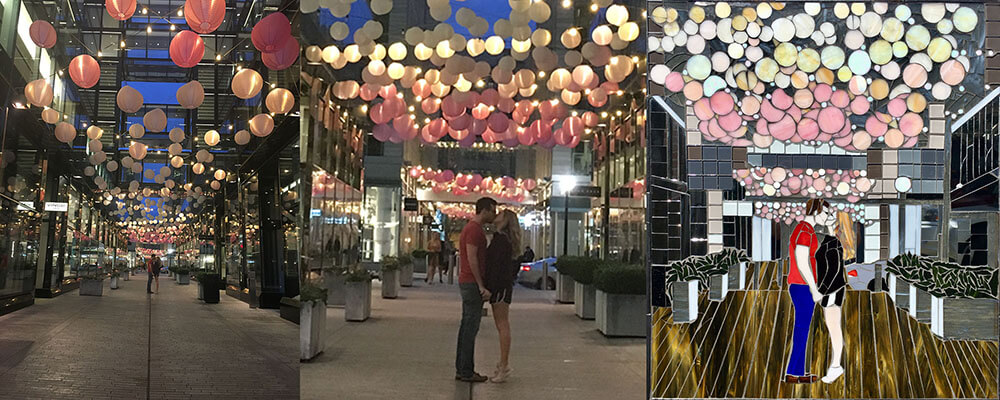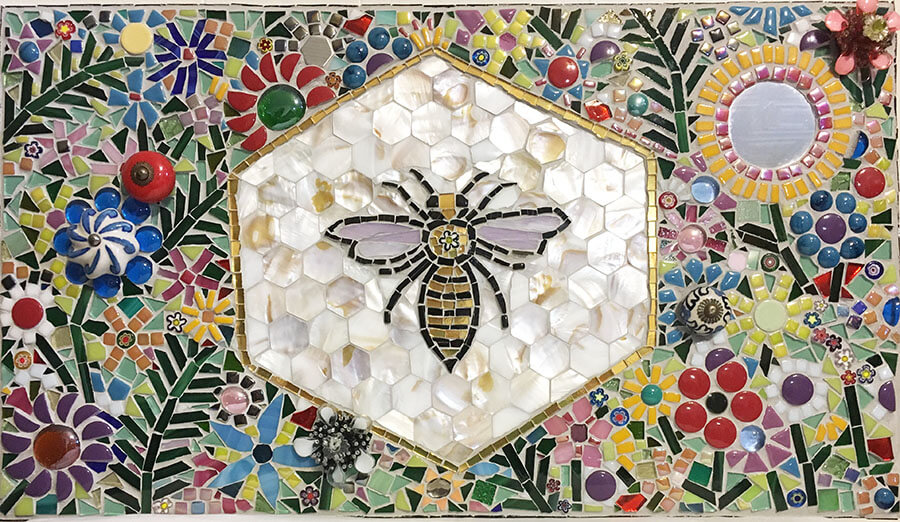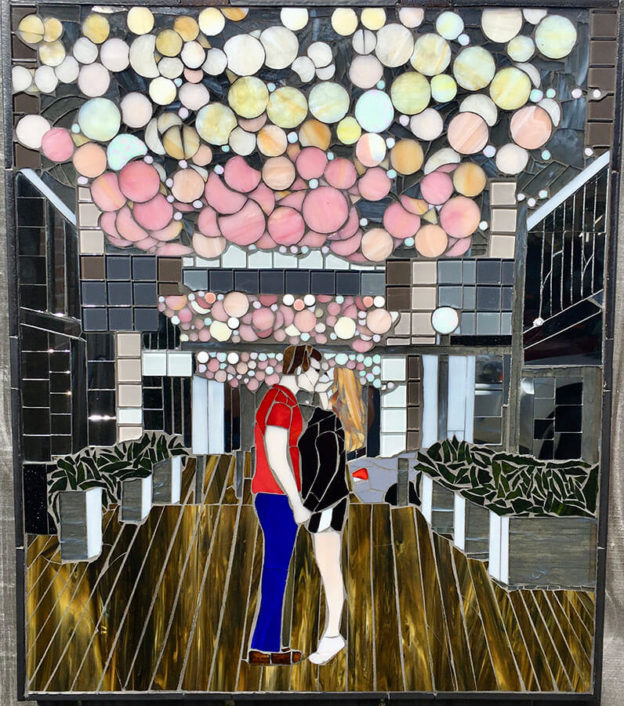Artist Candy Hahn emailed me a picture of her recent mosaic and the photograph she used as a model. It is a solid mosaic interpretation, and it reminded me that I am overdue to write about using photographs as models for mosaic art.
Sometimes a composition is made stronger by deviating from the model, especially when mosaicing or painting from a photograph.
Candy cropped the photograph so that the central figures were large enough to be the subject of the mosaic instead of being a small detail in the background.

In this case, the cropping doesn’t flatten the composition because enough depth is left, mostly provided by the balconies and planters to the left and right and how they create lines of sight. The replacement of the concrete with foreshortened planks in a warm wood tone was a great decision and also contributes to the sense of depth.
Notice that the lanterns aren’t reproduced down to the last individual.
Additional depth could have been created by increasing the size of the lanterns near the top of the panel, but that would have distracted from the pink lanterns directly over the heads of the kissing lovers, the focal point of the composition.
Sometimes you can’t simply crop out the foreground without losing depth.
Crop or Replace?
Consider this example: You have one particular snapshot that perfectly captures clouds blowing around the top of a distant mountain peak. In this snapshot, the foreground is visually uninteresting or problematic for some reason (think port-o-john with dumpster) but essential for creating a sense of depth and distance.
TIP: Landscape artwork creates a sense of depth by having objects at near, middle, and far distances. These objects are arranged to create lines of site, and without them, the image looks flat.
The alternative to cropping out the foreground is to replace it.
You could use the foreground from a different snapshot taken of the peak, maybe looking from the same road, maybe a snapshot that frames the far peak with nearby evergreen trees to the left and right.
If you aren’t trying to render a particular place or famous view, you have a lot of latitude. Those trees could come from a photo downloaded off the Internet.
TIP: The process of translating an image into mosaic usually involves a simplification of details that obscures things such as the exact type of evergreen tree being rendered.
Whether you replace the foreground mentally or by scissors and tape or by Photoshop depends on your ability to visualize.
Candy Hahn’s Mosaics

See more of Candy Hahn’s mosaic artwork.


Leave a Reply